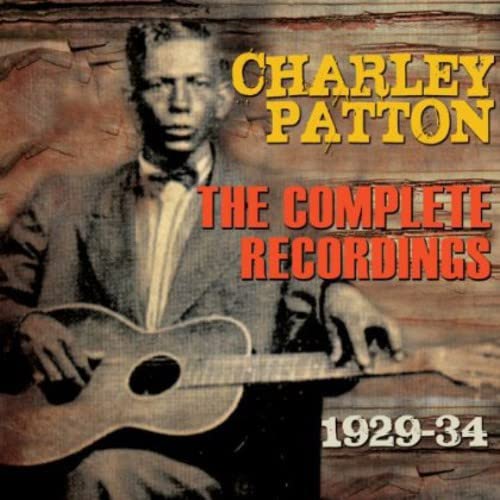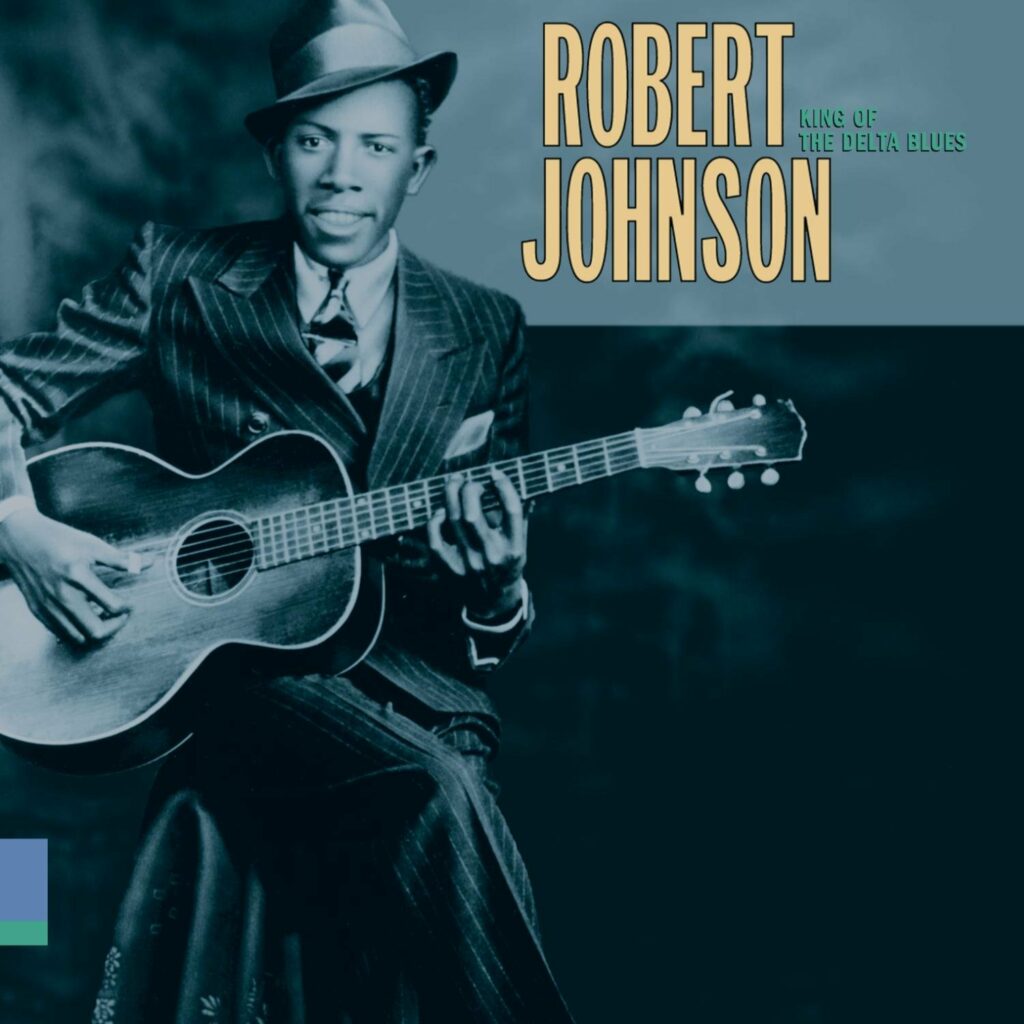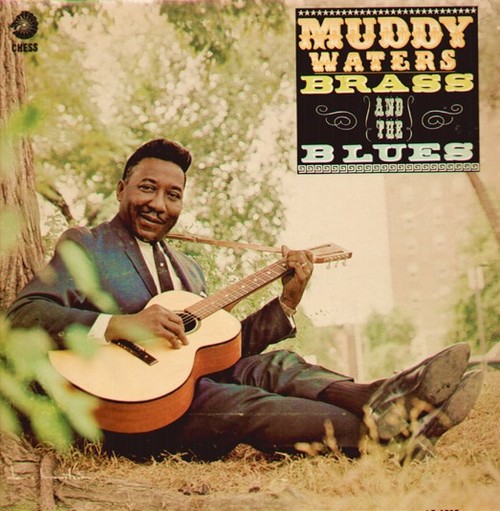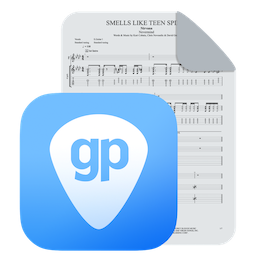
20 blues licks to spice up your guitar solos
- What’s the blues?
- Guitar Pro 8
- Lick 1 and 2: B.B. King
- Licks 3 and 4: Billy Gibbons
- Licks 5 and 6: Muddy Waters
- Licks 7 eand 8: Buddy Guy
- Licks 9 dan 10: Johnny Winter
- Licks 11 and 12: John Lee Hooker
- Licks 13 and 14: Stevie Ray Vaughan
- Licks 15 and 16: Eric Clapton
- Licks 17 and 18: Gary Moore
- Licks 19 and 20: Joe Bonamassa
- bb-king-lead-1.gp
- bb-king-lead-2.gp
- billy-gibbons-lead-1.gp
- billy-gibbons-lead-2.gp
- muddy-waters-lead-1.gp
- muddy-waters-lead-2.gp
- buddy-guy-lead-1.gp
- buddy-guy-lead-2.gp
- johnny-winter-lead-1.gp
- johnny-winter-lead-2.gp
- john-lee-hooker-lead-1.gp
- john-lee-hooker-lead-2.gp
- stevie-ray-vaughan-lead-1.gp
- stevie-ray-vaughan-lead-2.gp
- eric-clapton-lead-1.gp
- eric-clapton-lead-2.gp
- gary-moore-lead-1.gp
- gary-moore-lead-2.gp
- joe-bonamassa-lead-1.gp
- joe-bonamassa-lead-2.gp
Some guitarists will tell you the blues is easy to play, which is both kind of true and incredibly false. Technically, you don’t need to be a lightning-speed shredder to play those sweet pentatonic bends. Harmonically, most blues chord progressions are more or less identical and pretty basic. But the blues is an idiom, a language that requires a thorough study to be played properly. It’s not just about playing random notes from the scale over a 12-bar blues: it takes time and passion. We have created those 20 licks with passion, so now it’s your turn to put the time in!
Play the greatest blues standards with the Play Guitar Hits app. Learn at your own pace and level with two-handed videos and interactive sheet music.
Progress step by step and play the most popular songs from legendary bands such as Pink Floyd, Foo Fighters, Muse, Queen, Guns N Roses, AC/DC, Led Zeppelin, The Rolling Stones, Oasis…
Discover the secrets of the greatest musicians and guitarists such as Cory Wong, Joe Duplantier, Oz Noy, Pierre Danel, Nate Savage, Julien Bitoun, Réda Boucher, Jean-Félix Lalanne, Gareth Evans and many others!
Download the application for free in the Google store and the App store and enjoy 7 days of free access.
What’s the blues?
The blues has a very rich history, one that has defined the musical evolution of the 20th century. Rock directly came from the blues (to the point that the line between those two genres is blurry at best), but hip-hop and R’n’B (rhythm n’ blues, right?) also come from that tradition. In fact, you’d be hard-pressed to find a popular genre of music that emerged during the last 100 years that does not owe anything to the blues.
Even though there are countless blues currents and trends, three of them tend to stand out as milestones in the development of the style. Delta Blues started out in the Mississippi Delta (hence the name) in the early 1900s, starting with legends like Charley Patton and Son House. Delta Blues artists would usually sing and play at the same time without any other musicians to back them up, rarely playing solos as we envision them today, and often singing on simple one-chord structures. Monsters like Leadbelly, Blind Willie Johnson and Robert Johnson have defined the shape of blues and rock to come, including writing a lot of future standards, but as guitar players, they had a very complex style that has not really been imitated.
Chicago Blues on the other hand is the era that defined a lot of blues rules and conventions that we take for granted nowadays. African-American artists moved from rural Mississippi to the industrial North, and especially Chicago, looking for a better life, including a proper job and no institutional segregation.
Muddy Waters was one of the pioneers of Chicago Blues on the Chess Label in the early 1950s, and his electric style backed by bass, drums and piano has become a gold standard of sorts.
The brits pickup up on those Chess singles, and they created their own version of the blues, a stiffer, more aggressive take on the genre with an emphasis on guitar solos. All the guitar greats of the sixties have cut their teeth as part of the British Blues Boom, including Eric Clapton, Peter Green, Jeff Beck and Jimmy Page.
As time went on, the blues started to mix with rock to the point that those two have become very close, and many artists have been walking that fine line between the two. Any guitar hero worth his salt knows the blues, and they all have learnt their craft by stealing riffs from Clapton’s early work, from Duane Allman to Van Halen. Now is the time to start your own blues education with the help of those twenty licks inspired by ten blues legends. Each guitarist has inspired two different phrases, an easier one and another one that will require a little more work.
They are as close to a cliché dictionary of the genre, filled with great ideas that you can use as starting points to develop your own take. You have probably heard of the 12-bar I-IV-V structure by now (and if not you should definitely look into it), and the second lick for every artist works over the end of that structure when the backing tracks go from V to IV then back to the I. The first lick has a single static chord in the background, which makes it usable in a variety of situations.
Since blues is at its core an oral-based tradition, all the nuances and fine expressive points of those licks cannot be fully covered by a simple GP file (not for lack of trying though!).
Each lick comes with an audio track that will complement the GP transcription and help you hear what the results should sound like.
Of course, the blues is a deeply personal affair, it is a style that’s been helping musicians express their deepest frustrations, regrets and traumas. No two blues players sound alike because every single one of them has a different story to tell, and playing the blues is all about telling your own story in your own words, and with your own notes. Those twenty licks are great starting points to help you create your personal bag of licks by pinpointing those phrases and notes that truly resonate with what you have to say.
Guitar Pro 8
Download the free demo of Guitar Pro 8 to read the Guitar Pro scores proposed in this article.
Lick 1 and 2: B.B. King
Hail to the King. It’s only logical that the first two licks from that blues lesson should be inspired by B.B. King, since he has defined what a great blues solo should sound like. The man basically invented the way we bend the strings today. Though he started out on the acoustic in Mississippi, he became famous as a Memphis electric blues artist. His playing takes full advantage of the expressive possibilities of our instrument and sounds as close to the human voice as possible.
Lick 1 and 2 have the passionate bends that everyone stole from B.B. as well as his trademark mixture of minor and major pentatonic scales, here in the key of D.
Lick 1 is relatively straightforward while lick 2 has a jazzy chromatic run, which makes sense since B.B. King was a crossover artist, meaning he took the blues in more pop and jazz directions with hits like “Thrill Is Gone” and “Hummingbird”, and of course his legendary 1965 live album At The Regal.
Lick 1 in the style of BB King:
Lick 2 in the style of BB King:
Licks 3 and 4: Billy Gibbons
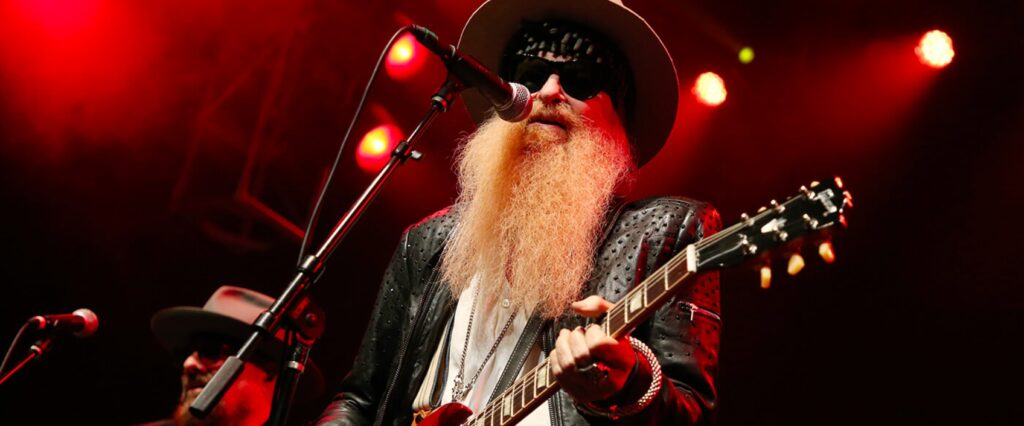
For those who are new to the world of blues guitar, Billy Gibbons is someone you should get to know. He created the trio ZZ Top in 1969 and has constantly been touring the world ever since, getting hits in the charts and becoming a legend in the process. Even though he never really went away from his band of super-greasy laid-back Texas blues, he made it more current by mixing it with the fads of the day, like synths in the 80s and autotune in the 2000s.
Lick 3 in the style of Billy Gibbons:
Lick 4 in the style of Billy Gibbons:
Lick 3 is a repetitive sliding pattern in E minor pentatonic that has become associated with Gibbons, while lick 4 is also in E pentatonic but the first bend brings the minor third towards a major sound, creating some classic harmonic ambiguity typical of the blues.
Licks 5 and 6: Muddy Waters
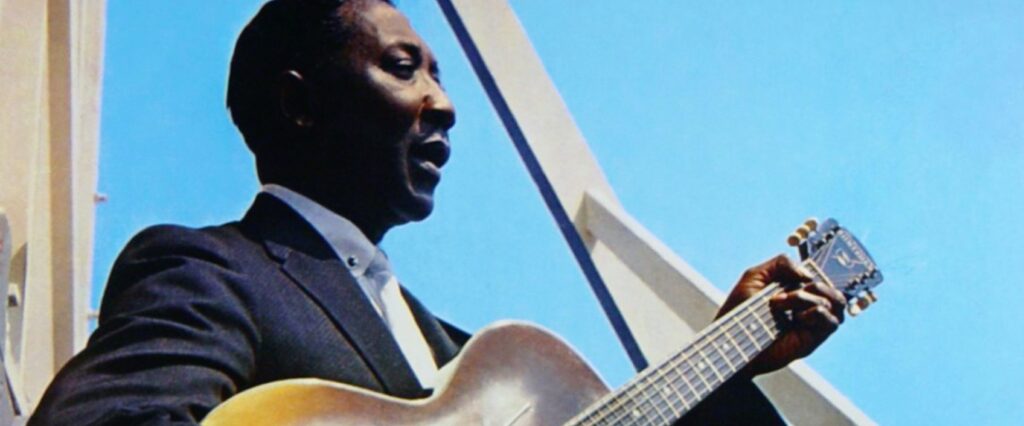
Muddy Waters is the ultimate Chicago great, an amazing singer that managed to stay relevant until the end of his career in the eighties (with a little help from his alumni Johnny Winter) and a crude guitar player that had some brilliant ideas, a tone to die for and just the right amount of out-of-tune notes to keep the listener on its toes. His razor-sharp slide-playing is especially enjoyable.
Lick 5 in the style of Muddy Waters:
Lick 6 in the style of Muddy Waters:
Lick 5 are some classic minor pentatonic runs in G, while Lick 6 has some of that sliding around (without the bottleneck).
Licks 7 eand 8: Buddy Guy
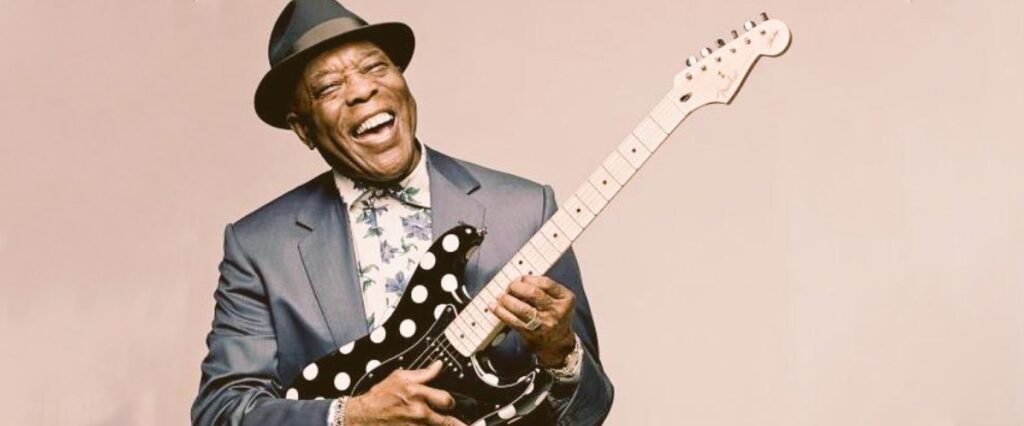
Buddy Guy is slightly younger than Muddy Waters, and he was the newer gunslinger in Chicago in the late fifties, with a howling voice and a wiry trebly lead playing on a Stratocaster, which deeply influenced a Seattle cat named Jimi Hendrix. He is currently aged 86 and continues to play on stage and inspire blues aficionados worldwide.
Lick 7 in the style of Buddy Guy:
Lick 8 in the style of Buddy Guy:
Lick 7 has that aggressive sting that makes Buddy’s playing so recognizable. It is over a static D chord, and bar 3 starts with a major-over-minor pentatonic lick that Jimmy Page used a lot, while Lick 8 includes a few scorching bends.
Licks 9 dan 10: Johnny Winter

Johnny Winter was the new generation of American blues players in the late sixties, influenced both by the Chicago pioneers by also by the British Blues Boom and psychedelic bands from the West Coast. He was famous for his sharp slide sound – courtesy of a Gibson Firebird – and for his virtuosic playing that brought blues into the seventies, the era of the guitar hero.
Lick 9 in the style of Johnny Winter:
Lick 10 in the style of Johnny Winter:
Lick 9 has some serious speed going on in B flat, with the help of repetitive patterns featuring legato playing with some bends thrown in for good measure, while lick 10 has some sixths borrowed from the country idiom.
Licks 11 and 12: John Lee Hooker
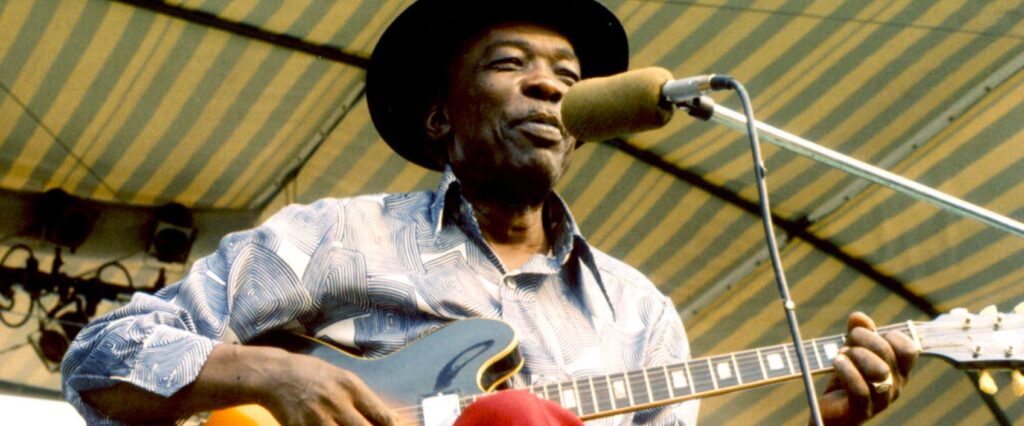
Even though the “boogie man” was born in Mississippi, he became a professional musician in Detroit, a town that’s not usually associated with the blues. His best work is made of solo songs in which he displays his deep African roots and haunting groove, masterpieces like “Boogie Chillun” and “Crawling King Snake”.
Lick 11 in the style of John Lee Hooker:
Lick 12 in the style of John Lee Hooker:
Both licks are in the key of E. Lick 11 ends with two notes sliding down, which has become a signature move for many blues soloists, and lick 12 has a typical turnaround melody that nicely concludes a 12-bar blues.
Licks 13 and 14: Stevie Ray Vaughan
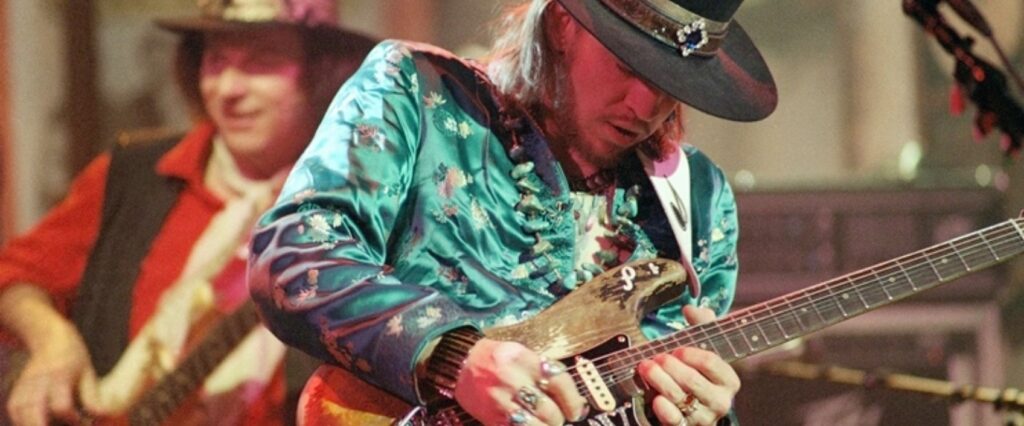
In the eighties, back when blues was deeply unfashionable, Stevie Ray Vaughan appeared out of Texas as a sideman for David Bowie. He then developed his own solo career, blending the sharp attack of Albert King with the melodic sense of Jimi Hendrix. He brought the Strat and the blues back into fashion and most guitarists are still lusting after his enormous tone.
Lick 13 in the style of Stevie Ray Vaughan:
Lick 14 in the style of Stevie Ray Vaughan:
Lick 13 puts some double stops to good use, and it should be played heavy-handedly. Lick 14, also in the key of A, shows a more virtuosic side of SRV’s work, with a nice legato lick moving from major to minor being transposed to fit the chords in the backing track.
Licks 15 and 16: Eric Clapton
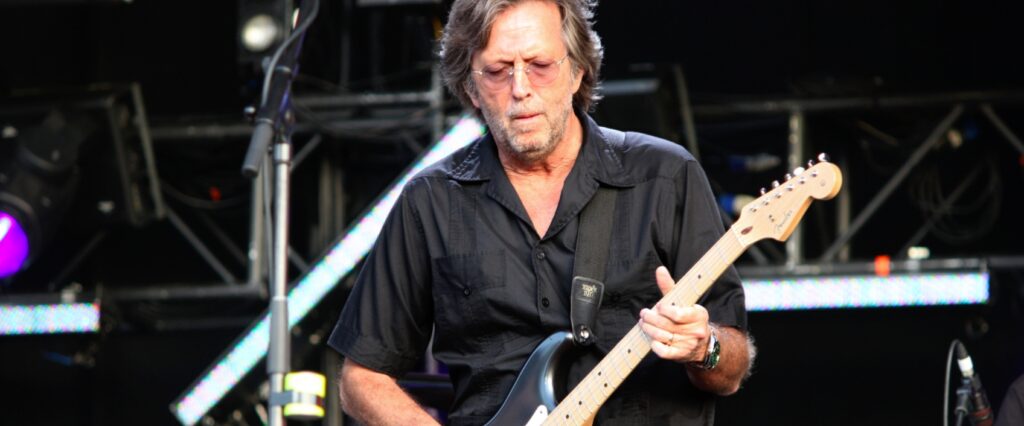
Clapton is the ultimate British bluesman, the one who made a whole generation want to play Les Paul and defined the sound of a Marshall pushed to the limit, whether with John Mayall or in the original power trio Cream. His later hits lean more to the pop side of the force, but he can still play a 12-bar jam like no one else.
Lick 15 in the style of Eric Clapton:
Lick 16 in the style of Eric Clapton:
Lick 15 alternates between major and minor in C, while lick 16 shows a faster side of Clapton’s playing, including a great lick with double stops and hammer-ons that you need to steal.
Licks 17 and 18: Gary Moore

Gary Moore was a fan of Fleetwood Mac’s Peter Green in the late sixties, so he bought his Les Paul. But the Irish native didn’t become a blues idol right away: first, he played hard rock and heavy metal before releasing his most successful album, Still Got The Blues in 1990. He could play very technical licks but at the same time had a very dramatic vibrato that could make grown men weep.
Lick 17 in the style of Gary Moore:
Lick 18 in the style of Gary Moore:
Lick 17 starts with an arpeggiated chord around the minor 7th and major 3rd straight out of the Hendrix playbook, don’t be shy with your left-hand vibrato! Unusual notes can also be found in lick 18, notably a sixth on the A which underlines the chord structure in the key of D.
Licks 19 and 20: Joe Bonamassa

Joe Bonamassa was already playing gigs opening for B.B. King when he was only 11 years old. Since then, the Utica, New York native has gone on to establish a very productive solo career, with an album every year and a growing audience of blues enthusiasts and guitar geeks.
Lick 19 in the style of Joe Bonamassa:
Lick 20 in the style of Joe Bonamassa:
Both licks are in the key of B (a very enjoyable key on Gibson-style guitars) and lick 19 includes a bend that starts off with a simple half-step bend and then goes to one step and a half, a very powerful move indeed. Lick 20 has the fastest run of the whole lesson, mixing legato with slide. That Eric Johnson-inspired lick is guaranteed to surprise and stun the audience if you can pull it off!
As usual, those twenty licks should be worked out slowly if you want to get them to sound as clean as they should. Feel free to move them to different keys and integrate some of those notes as part of your own improvisations. Have fun!
Leave a comment
Your email address will not be published.
| Title | Artist | |
|---|---|---|
Rock Bottom

|
UFO | |
| Trail of Broken Hearts | DragonForce | |
Back in Black

|
AC/DC | |
| Suffering Under Words of Sorrow (What Can I Do) | Bullet for My Valentine | |
| The Air That I Breathe | The Hollies |

